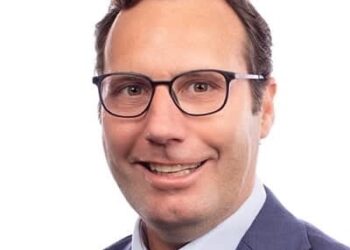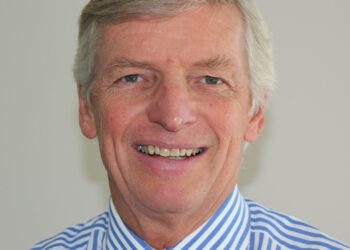When it comes to pragmatic wisdom to solve issues of growth and scale, those of us advising clients in regional centres know a thing or two about efficient use of available resources.
Growth is too often confused with size. More offices, more headcount, more acquisitions, more logos on the website. None of that guarantees a better client experience or a more resilient business.
Scale isn’t about adding, it’s about more value per unit of effort – doing more with what you’ve got by putting better systems behind your people and processes.
Nowhere is that clearer than in regional Australia.
Here, inefficiency hurts more. Geography turns small process gaps into hours on the road; thin labour markets mean you can’t hire your way out of admin; and client needs are broad: from farm succession, self-managed super funds, Centrelink to multigenerational planning and more. Add to that reputation travels faster than a letterbox drop and you learn fast that scale comes from tight, productive systems and clear roles.
Before you chase growth, start with five hard questions:
- What problem are we really trying to solve: client volume, client value, efficiency or succession?
- Are our systems designed to free up adviser time for what matters most?
- Do we have the right people in the right roles, even if they’re from outside the industry?
- Does our culture create trust and accountability that is strong enough to scale beyond any one person?
- Do we have a clear value proposition backed up by an operating model that consistently delivers the right client experience?
Lessons from the field: scaling in ‘the bush’
Fifteen years ago, we asked ourselves: What are we trying to achieve? The answer was equally simple – help as many people as possible.
That mindset shift – from cherry-picking “preferred” clients to opening the door to many – forced a redesign of everything: who did what, in what order, and why it mattered to the client across the table.
To make that promise real, we rewired around productivity. Advisers weren’t hired to push paper; our only real job is to help clients understand choices and trade-offs so they can make informed, confident decisions about their money. Everything else moved into systemised, delegated workflows.
Once the model carried the load, capacity followed. Without rushing or thinning the advice, an adviser’s day could comfortably hold four to six complex client conversations with room for more when it’s a straightforward review. The point isn’t speed; it’s friction removed. A good example is Dr Ben Neilson, who doubled productivity in his first year by working inside clear lanes with proper support – he had the same hours as everyone else, just better focus.
And in the bush, consistency matters twice over. We live where our clients live, so accountability is immediate; miss the mark and you test the town’s trust. Regional realities also shape service design: not everyone wants an ongoing fee arrangement, but in small towns, if you’re someone’s adviser, you’re their adviser – episodic or ongoing. We make room for both, and the standard stays the same either way.
Scale is a system, not a tech stack
Many practices chase software when what they need is a system. Most firms run the same tools; the difference is the operating model that defines outcomes, creates consistency, and keeps advisers where they add value – with clients. Technology should enable that system, not pretend to replace it.
For me, scale isn’t the target – it’s the by-product of effectiveness. Do the right things, with the right people, the right way. Then make them faster. In other words: effectiveness first, efficiency second. Remember: the quarterback doesn’t tackle. Every adviser minute should move a client outcome forward; everything else belongs with the engine room.
I use a simple benchmark to keep us honest: four client meetings a day, five days a week, 40 weeks a year – 800 meetings. It’s not a hero number; it’s a focus number. If we’re well below it, something is dragging the chain. If we’re well above it, we verify that quality hasn’t slipped and sanity check adviser loads.
Once the system is steady, match talent to roles. We rarely hire from within the industry; we hire for mindset, potential and cultural fit – then train for skills. Put the detail-minded where accuracy compounds value, and the fast movers where triage and momentum matter. Done well, quality rises while rework falls.
Bottom line: the stack is useful but the system is what scales. Build the system to deliver the experience you promise, use technology to accelerate it, and put people in roles where they can actually win.
The future of scalable advice
We don’t have an adviser shortage – we have an adviser utilisation problem. The capacity exists; it’s trapped. That’s especially true in the regions: communities are spread, needs are diverse, logistics are harder. The answer isn’t more bodies; it’s an end-to-end, systemised process that runs the same way every time so client time scales without quality slipping. Before we flood the system with newcomers who haven’t lived through a market crash or sat with a terminally ill parent, let’s unlock the highly qualified, experienced advisers we already have.
How? Systemise the entire advice process. AI will accelerate that – if the foundations are in place. Otherwise, it’s like giving a home handyman a more powerful drill and pretending you’ve taught carpentry.
Inside a strong operating model, AI will amplify high-agency people, not just advisers – people who know their role, own outcomes, and build mechanisms around their work. Advisers become markedly more productive, serving more clients at lower cost.
Partnerships are the other force multiplier – they create hyper leverage. Don’t just buy from product or service suppliers; find genuine partners whose success naturally lifts yours. Service models ultimately break, so build as many partnerships as you can that carry you on the way to their own successes. This includes clients as referrers and businesses that naturally support yours – accountant COIs, platform providers, and a licensee with resources you can leverage.
Put bluntly, the firms that win from here will do three things. Systemise the work, amplify the people with AI, and let partners add lift.
What I’d do on Monday
From experience, building a scalable advice business comes down to five moves:
- Start with purpose. Decide who you serve and why – let that drive every operating choice.
- Redefine every role – especially the adviser’s. System first, then technology, then people (hired on talent and develop to fit the system).
- Build effective systems, then make them efficient. Do the right things first, then do those things right.
- Hire for talent, not tenure. Put the right people in trusted roles and let systems and technology carry the rest.
- Partner for leverage. Choose aligned partners whose success naturally amplifies yours.
That’s how you scale an advice practice that works from the CBD to the cattle grid.
Matt Battye, CEO and financial adviser at Complete Wealth




The financial advice industry has long wrestled with the tension between quantity and quality, but some have taken the delusion of scale to a whole new level. The latest sermon from the “scalable advice” pulpit would have us believe it’s possible to service 800 clients per adviser without sacrificing quality, depth, or care. Let’s call that what it is, a fantasy dressed up as efficiency.
We’re told regional advisers have mastered the art of “systems over size,” squeezing more value from every minute, every meeting, every keystroke. Admirable in theory, laughable in practice when stretched to this degree. Because at the heart of real advice is relationship, and relationships can’t be systemised, templated, or automated. You can’t workflow empathy. You can’t put deep human understanding into a CRM and expect it to scale.
To pretend otherwise isn’t innovation, it’s industrialisation. It’s the factory-line model of advice, neat, efficient, and utterly hollow.
Let’s unpack that heroic benchmark, four client meetings a day, five days a week, 40 weeks a year, 800 meetings. The arithmetic is neat, but the logic collapses the moment you bring reality into the room. Who exactly are these clients? Where’s the preparation time, the follow-up, the file notes, the implementation, the compliance checks, the thinking?
If each client meeting truly represents personalised, goals-based advice, not a perfunctory annual check-in, then claiming this level of throughput isn’t scalable advice, it’s mass production. It’s also dangerous. Because the moment you start measuring success by volume instead of value, you stop being an adviser and start being a processor. You might as well swap the title financial adviser for financial operator, cheaper, faster, less accountable.
The article confuses efficiency with effectiveness, and structure with substance. Systems are essential, but no system can carry the moral and professional burden of genuine advice, advice that requires time, reflection, and care. AI won’t save it. Workflow automation won’t save it. And clever operating models certainly won’t.
Scaling advice isn’t about doing more of the same, faster. It’s about maintaining the integrity of the service while extending its reach. That’s not achieved by loading more onto advisers, it’s achieved by clarity, selectivity, and courage, the courage to say no to overreach in the name of “growth.”
If regional advisers have anything to teach, it’s not how to systemise human connection. It’s that trust and accountability matter more in small communities precisely because everyone knows everyone. If you cut corners or thin the service, word spreads, fast. That’s the real scalability limit, reputation.
So let’s stop glorifying volume as virtue. Let’s stop pretending that more clients per adviser equals more Australians better served. It doesn’t. It’s a shortcut to mediocrity disguised as progress. Scalable advice is fine, until it forgets that advice is the noun that matters, not scale.
The claim that an adviser can service 800 clients a year without compromising quality is, frankly, ridiculous. Financial advice is not a production line, it is a relationship business built on understanding, trust, and judgment.
To suggest that an adviser can meet four clients a day, five days a week, forty weeks a year, while maintaining genuine personal insight into each client’s goals, structures, and emotional drivers, defies both logic and human capacity. That model doesn’t scale advice, it industrialises it. The result is not efficiency, it is erosion.
When client numbers swell, the time for reflection, review, and proactive thinking collapses. Meetings become scripted, not strategic. The adviser becomes a scheduler, not a professional thinker. And while the spreadsheet might look good, the client experience becomes hollow, a box-ticking exercise masquerading as advice.
High-quality advice demands care, not throughput. The industry should stop pretending that more clients equals more success. True professionalism lies in knowing your limits, and respecting that the integrity of advice depends on depth, not volume.
Brilliant behaviour and synopsis but doesn’t use digital advice to get scale – the cost of advising clients that can’t afford an adviser because their needs are not complex means advisers in regional
Australia say no or lose money. Scale in advice is embracing full on personal advice delivered digitally at less than $200 a year … that’s the future not systems driven 6 meetings a day ?
These are not mutually exclusive. Personal advice delivered by a person for $200/yr, or digital advice completely replacing person to person engagements are equally inaccurate. There will continue to be high touch, high price advice for sure, but there will also be a place for high volume relatively low touch. This will be systematcially driven – but backed by real people with aligned interests.
Digital will be the highest volume of course, but each of these will be different markets
Well-articulated no-nonsense approach – credit to you and team.
Solid – finally a bloke leading from the front and willing to back that his people are well placed to deal with client needs throughout the regional centres .. where advice is often needed most